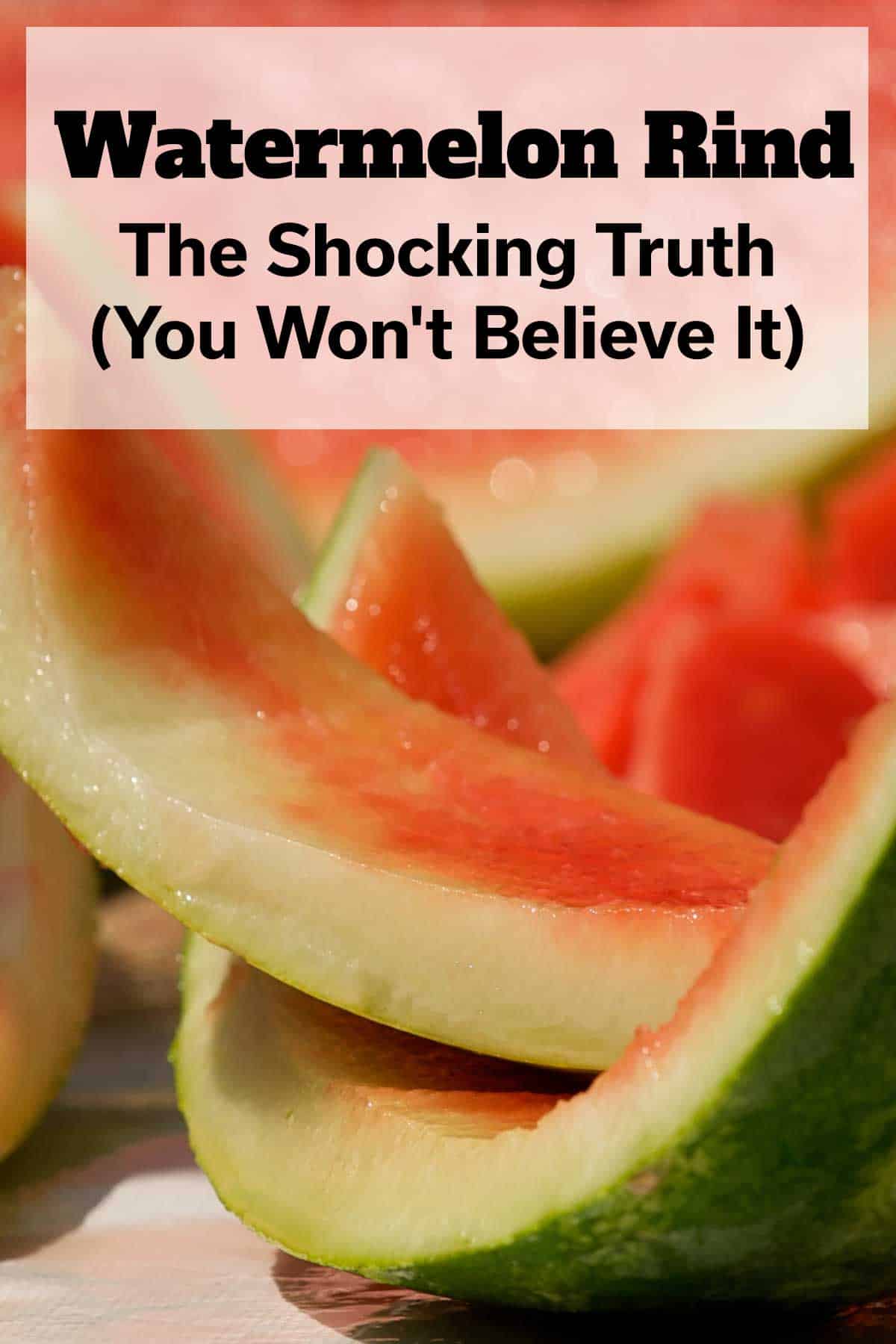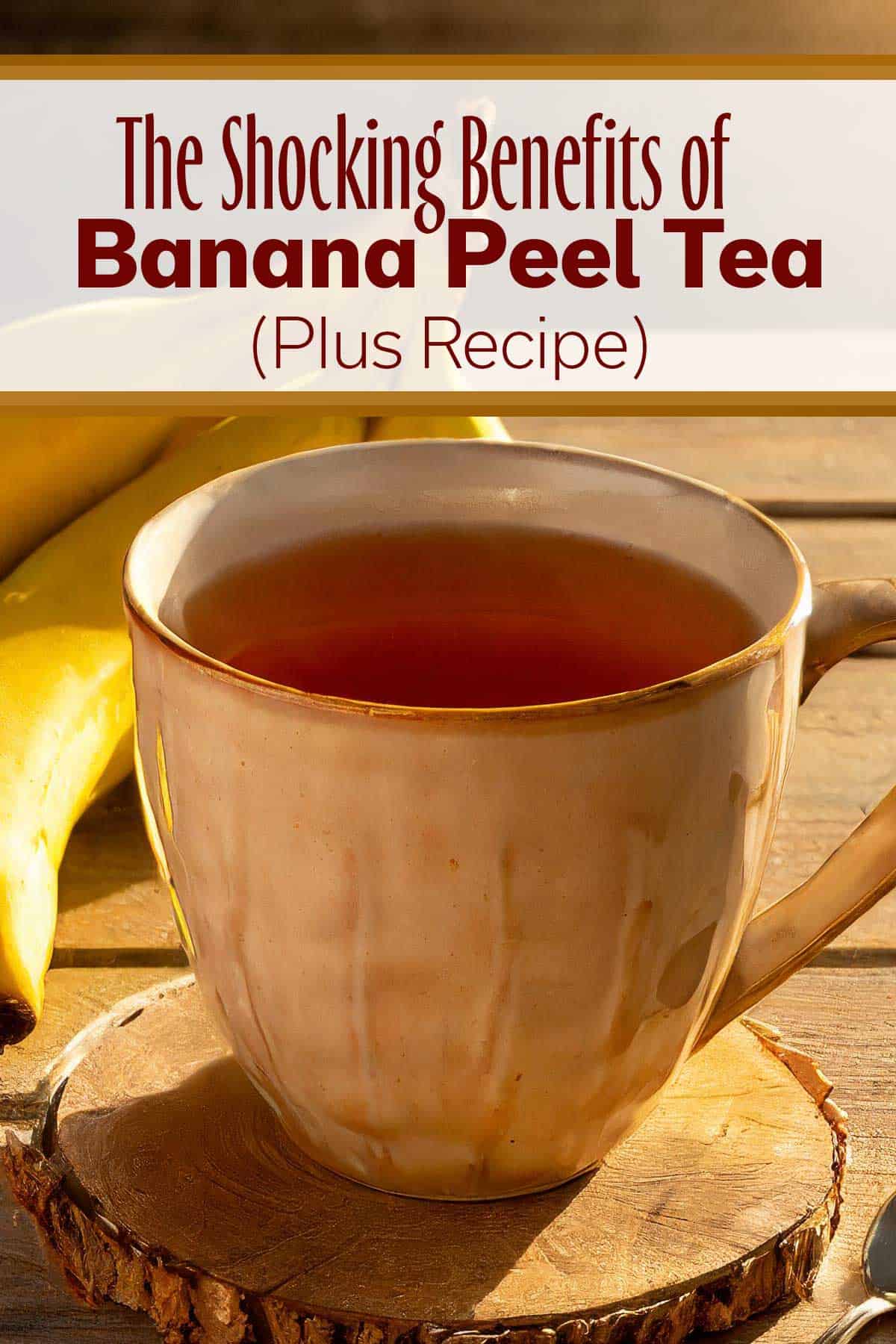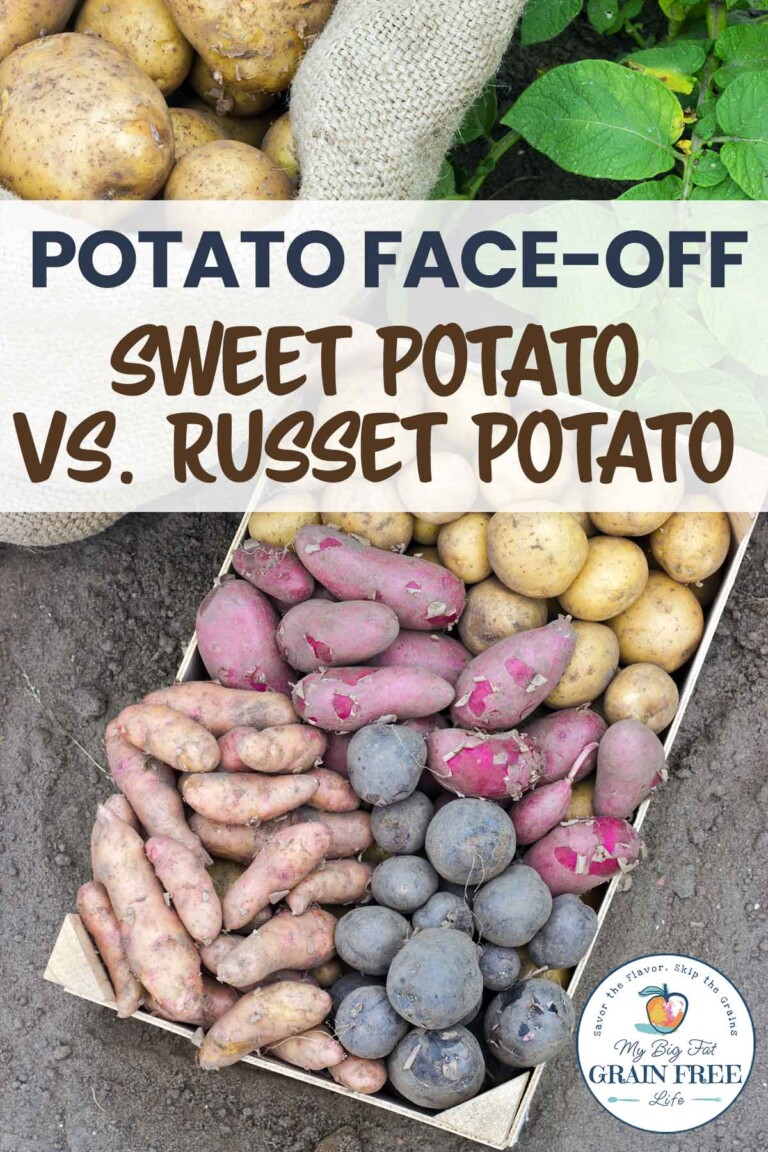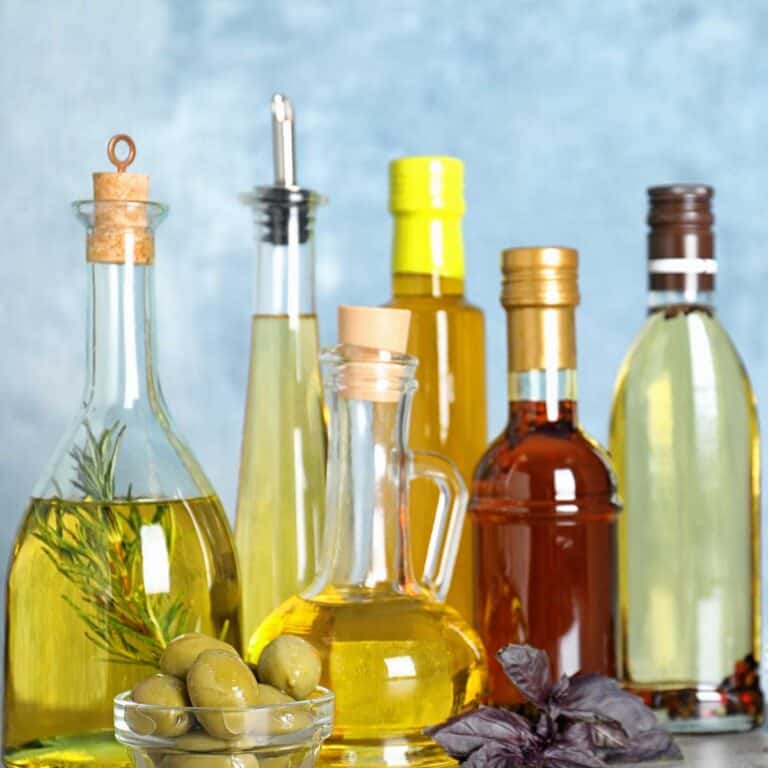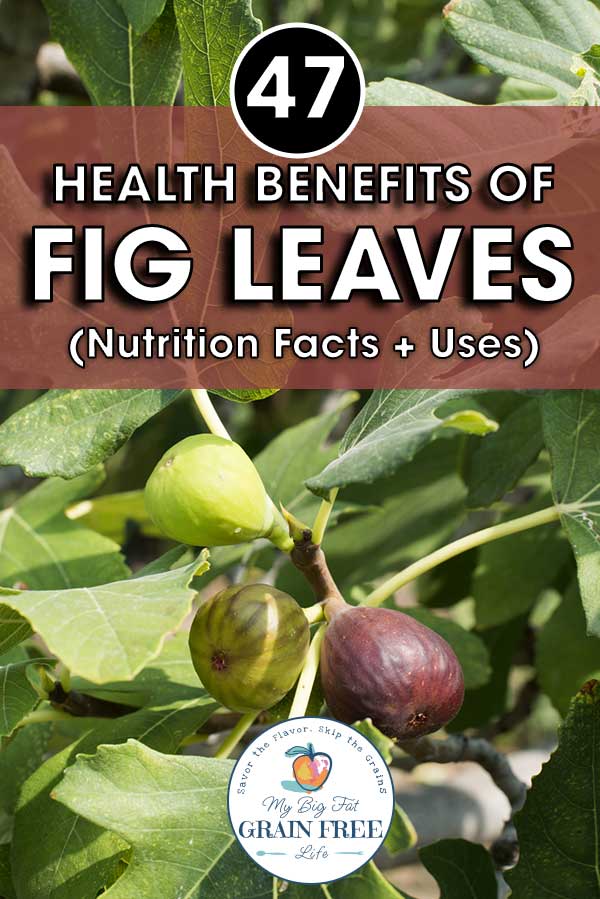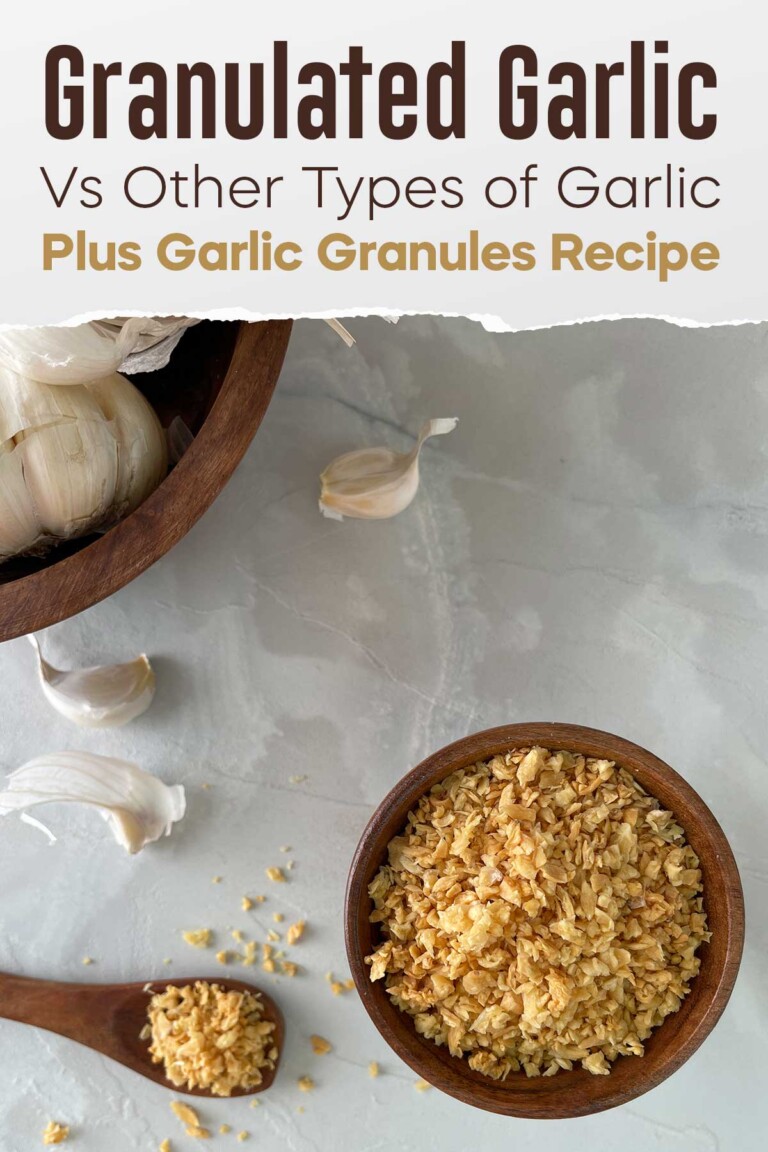Surprising Health Benefits of Boiling Pineapple Peel
This post may contain affiliate links. If you make purchase after clicking a link, I may receive a commission at no extra cost to you.
Last Updated on October 30, 2023
Many people love pineapple fruit, but the rinds are often discarded. Did you realize the peels of this tropical fruit can be used too? The fact of the matter is that there are MANY health benefits of boiling pineapple peels. Sound weird? I thought so too, until tried it!
Learn all about boiling pineapple peels and the best ways to use the liquid to reap the myriad of health benefits.

Boiling Pineapple Peel
Pineapple peel is typically tossed without realizing that you can actually use it! Boiling the skin of the pineapple helps to extract the nutrients present in the peel, such as vitamins and minerals.
After boiling the rind of the pineapple, you are left with a liquid that has a slight tropical taste that you can add to teas, sauces, or even cocktails. You can increase the health benefits of smoothies by using pineapple peel water as the liquid.
Lastly, boiling pineapple peel is an excellent way to reduce waste and make use of every part of the fruit. Instead of throwing away the fruit peels after eating the flesh, boiling them allows you to extract additional value from this often overlooked part of the fruit.
So next time you enjoy fresh pineapples, don’t forget about their peels!
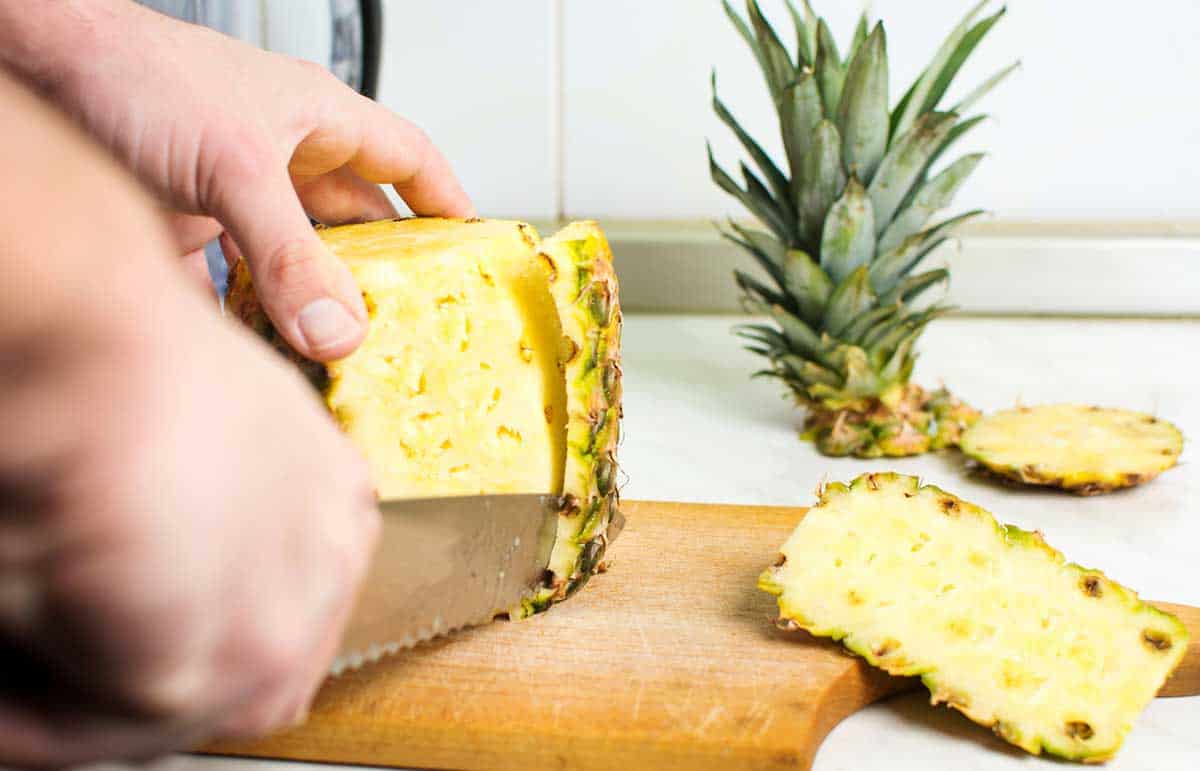
So, You Can Eat Pinapple Peel?
If boiling the pineapple rind is new to you, you might be wondering if it’s even safe to consume. The answer is a resounding yes! While you may have never considered eating the pinapple rind, boiling it extracts some amazing flavors and nutrients.
You are not necessarily eating the pineapple skin (although you could, but that would be a weird mouthfeel), rather you are using the liquid that is leftover after you strain the boiled pineapple peel.
Have You Ever Considered Eating The Pineapple Peel?
If the concept of eating the pineapple rind is new to you, this article may just very well convince you to give it a try.
Let me explain why!
Pineapple skin tea can improve digestion, potentially lower blood pressure, boost immunity, and even relieve joint pain. In addition, it is great at helping your body detox and can provide hydration and boost your energy levels.
But wait – there’s even more! Keep reading to learn why you should be boiling pineapple peels instead of tossing them.

Vitamins and Minerals in Pineapple Peels
Pineapple peels include a high amount of vitamin C, vitamin A, and various B-vitamins such as thiamin (B1), riboflavin (B2), niacin (B3), and folate (B9). Pineapple peel is also a good source of potassium and manganese.
You may also like Watermelon Rind: The Shocking Truth (You Won’t Believe It)
Antioxidants In Pineapple Skin
The peel of the pineapple contains compounds such as flavonoids and phenolic acids that possess antioxidant properties. These antioxidants help protect the body against oxidative cell damage and stress caused by free radicals.
One specific antioxidant found in pineapple peel is called bromelain, which has been shown to have anti-inflammatory effects.
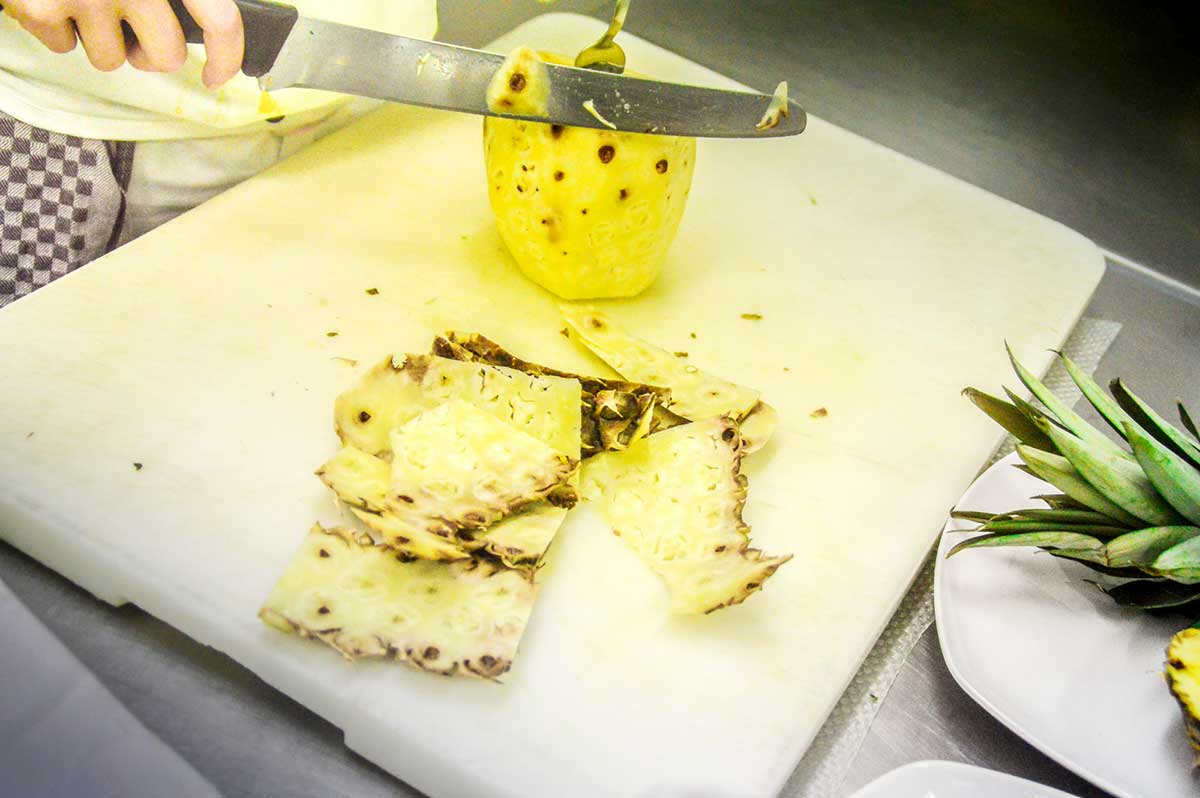
Health Benefits Of Boiling Pineapple Peels
Take a look at all the health benefits of pineapple peel “tea.”
Boosts Digestive Health
Drinking the liquid from boiled pineapple peel aids digestion due to its high fiber content.
Increases Digestive Enzyme Levels
Drinking pineapple peel tea can stimulate the production and release of digestive enzymes in your body, including proteases, amylases, and lipases.
Supports Weight Loss
The fiber in boiled pineapple peel helps you feel full for longer periods, reducing hunger cravings and helping you manage your weight.
Enhances Immune Function
Pineapple peels are rich in vitamin C, which strengthens the immune system and protects against common illnesses like colds and flu.
Improves Heart Health
Boiled pineapple peel contains bromelain, an enzyme that helps reduce inflammation and blood clotting, thus improving heart health and lowering the risk of heart disease.
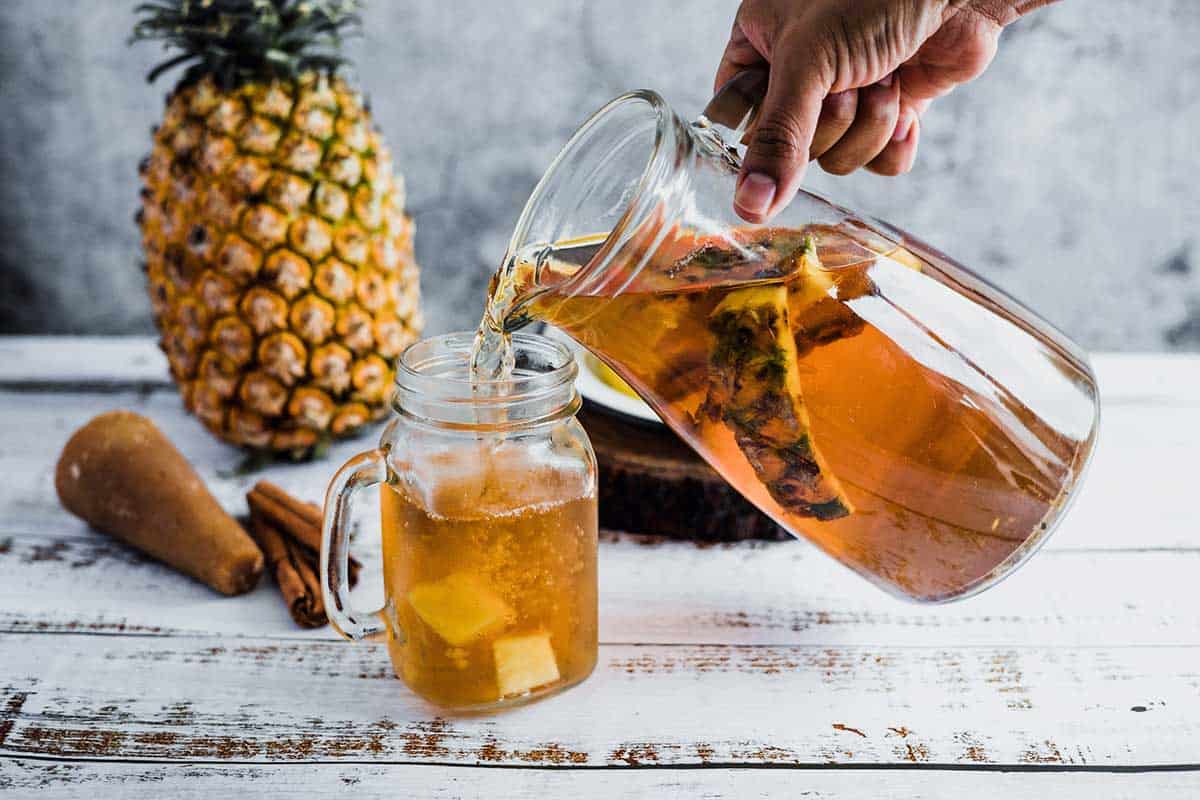
Regulates Blood Pressure Levels
The potassium present in boiled pineapple peel assists in maintaining healthy blood pressure levels by balancing sodium levels within the body.
Reduces Inflammation
Certain compounds found in pineapple peel have anti-inflammatory properties, which can help relieve symptoms associated with chronic inflammation.
Relieves Joint Pain
Bromelain, a powerful enzyme present in pineapples, has been shown to have pain-relieving effects, which may benefit individuals suffering from joint pain or arthritis when consumed regularly.
Aids Wound Healing
Applying boiled pineapple peel topically can promote faster wound healing due to its anti-inflammatory properties and high vitamin C content.
Aids Detoxification
The antioxidants present in boiled pineapple peel help eliminate toxins from the body, supporting overall detoxification processes.
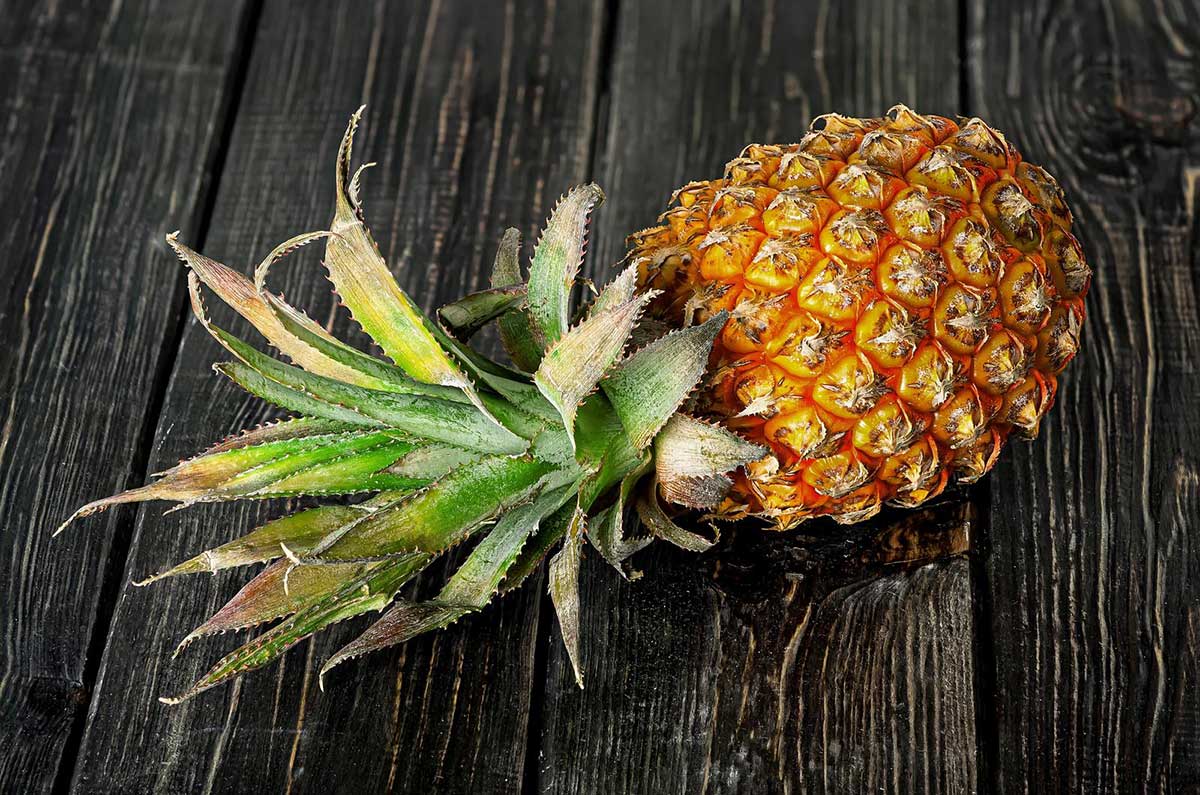
Anti-Parasitic Properties
Drinking boiled pineapple peel can help get rid of intestinal parasites and intestinal worms due to its natural antiparasitic properties.
Cleanses Kidneys
Pineapple peel acts as a diuretic due to its bromelain content, which promotes kidney function and aids in the elimination of toxins from the body.
More Benefits Of Boiling Pineapple Peels
There are even more health benefits of boiling pineapple peels, some of which might be a surprise. Did you know that drinking the liquid from boiled pineapple peels can boost your energy levels?
Strengthens Bones and Teeth
Boiling pineapple peels releases calcium into the liquid, providing essential minerals needed for strong bones and teeth.
Supports Eye Health
Boiled pineapple peels contain beta carotene which is converted into vitamin A by the body. Vitamin A promotes good vision and reduces age-related macular degeneration risks.
Improves Oral Hygiene
Boiled Pinneaple Peel acts as a natural mouthwash killing bacteria causing bad breath and gum diseases.
Enhances Brain Function
The antioxidants and nutrients in boiled pineapple peel can improve cognitive function, memory retention, and focus.
Regulates Blood Sugar Levels
Boiled pineapple peel contains dietary fiber which helps regulate blood sugar levels by slowing down the absorption of glucose into the bloodstream.
Alleviates Allergies
Bromelain found in boiled pineapple peel has been shown to have anti-allergenic properties, reducing symptoms such as nasal congestion or itching caused by allergies.
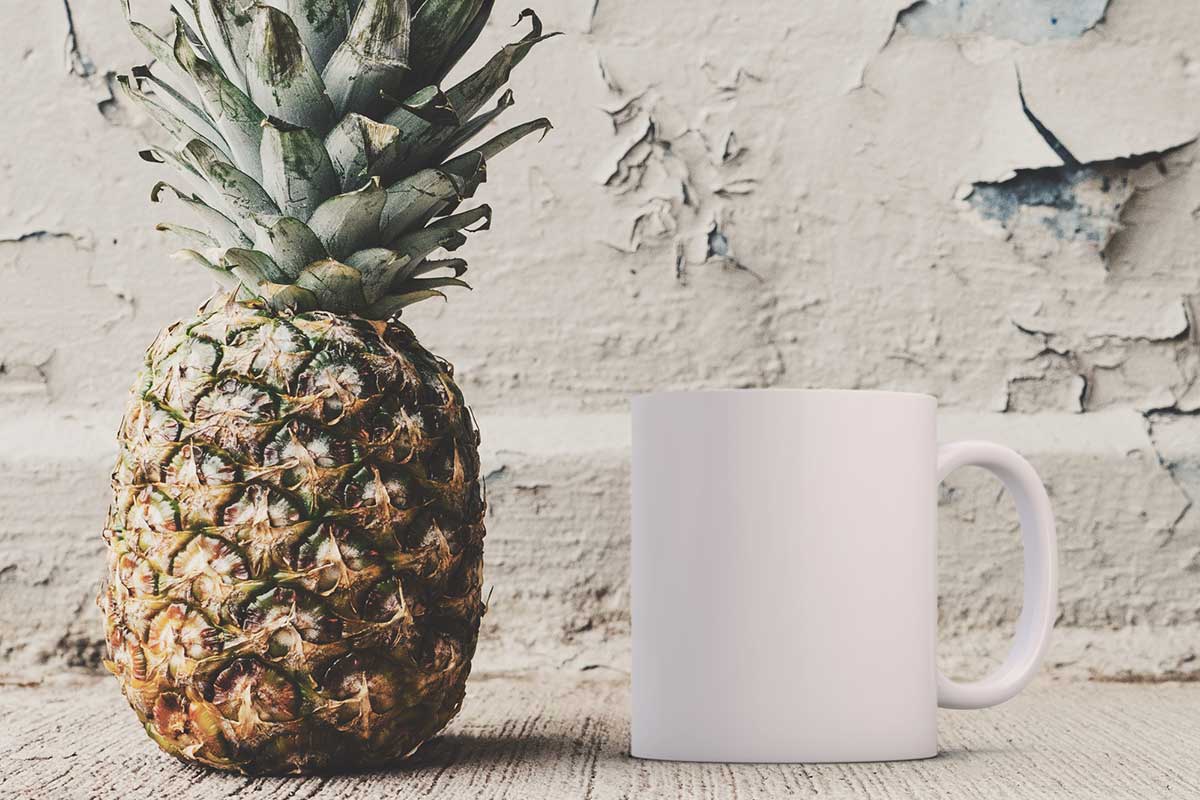
Supports Healthy Pregnancy
The folate content in boiled pineapple peels is essential for fetal development during pregnancy and reduces the risk of certain birth defects.
Boosts Energy Levels
Pineapple peels are a natural source of vitamins and minerals that provide an energy boost without relying on caffeine or sugary drinks.
Fights Infections
The antibacterial properties present in boiled pineapple peels can help fight off various infections within the body when consumed regularly.
Reduces Asthma Symptoms
Bromelain found in boiled pineapple peels may alleviate respiratory symptoms associated with asthma due to its ability to reduce inflammation and mucus production.
Hydration Support
With its high water content (about 87%), eating pineapples can contribute to overall hydration status.
Pineapple Peel for Skin & Hair
There are also health benefits of boiling pineapple peels when it comes to skin and hair.
Improves Hair Health
Applying cooled pineapple peel liquid to hair can help reduce dandruff, nourish the scalp, and promote healthy hair growth.
Combat Hair Loss
Pineapple’s rich source of Vitamin C can help prevent hair loss and supports a healthy scalp.
Promotes Healthy Skin
The vitamins A and C found in boiled pineapple peels contribute to collagen production, resulting in healthier skin with a natural glow.

What To Do With Pineapple Peel
So, now that you are convined you need to try boiling the peels from pineapple, what do you do with the pineapple skin? Below are some ways you can use pineapple peel to reap the health benefits.
- Pineapple-infused water: Use the boiled liquid as a refreshing and flavorful base for your drinking water.
- Pineapple tea: Add some honey or lemon to the boiled liquid for a soothing and aromatic pineapple tea.
- Pineapple kombucha: After brewing kombucha, you can go through a second fermentation with the addition of boiled pineapple water.
- Smoothie booster: Incorporate the boiled pineapple peel liquid into your favorite smoothie recipes to add a tropical twist.
- Marinade ingredient: Use the liquid as an ingredient in marinades for meats or vegetables to enhance their flavor with a hint of pineapple.
- Salad dressing: Mix the boiled pineapple peel liquid with olive oil, vinegar, an unrefined type of salt, and seasonings to create a unique and tangy vinaigrette.
- Ice cube tray filler: Pour the cooled boiled liquid into ice cube trays and freeze them for later use in beverages or cooking.
- Syrup base: Reduce the boiled pineapple peel liquid on low heat until it thickens slightly, then cool it down to create a delicious simple syrup base for desserts or pancakes.
- Baking ingredient: Replace part of the liquids called for in cake or muffin recipes with the strained cooled-down juice from boiling pineapple peels for added moisture and flavor.
- Facial toner: Allow the boiled pineapple peel liquid to cool completely before using it as an all-natural facial toner that helps refresh and hydrate your skin.
- Hair rinse: After shampooing, rinse your hair with cooled strained juice from boiling pineapple peels as a natural conditioner that adds shine.
- Tropical cocktail: Use pineapple peel water and yellow or red watermelon to create tropical flavors with your favorite alcohol — or make a low sugar mocktail instead!
Also consider learning about the benefits of banana peel tea.
How to Make Pinapple Peel Tea
The easiest way to use boiled pineapple peel is by making a “tea,” which is essentially pineapple water. Using all the parts of the pineapple helps to eliminate food waste.
How to Prepare Pineapple Peel Tea
To make pineapple peel tea, follow these simple steps:
- Gather the Ingredients: 2 cups of pineapple peels (cleaned and washed, preferrably organic), 4 cups of filtered water, and a natural sweetener (optional).
- Prepare the Pineapple Peels: Remove the outer skin of a fresh pineapple with a knife, making sure to leave behind only the yellowish peel.
- Boil Water: In a large pot, bring 4 cups of filtered water to a boil over high heat.
- Add Pineapple Peels: Once the water is boiling, add the cleaned and washed pineapple peels into the pot.
- Simmer for Flavor Infusion: Reduce heat to low and let the mixture simmer uncovered for about 30 minutes or until you notice that it has taken on a golden hue.
- Strain and Serve: Using a fine-mesh strainer or cheesecloth, strain out all solids from the liquid into another container such as teapot or pitcher.

How Long Should I Boil Pineapple Peels?
To extract the most nutrients from the skin of the pineapple, you should boil the peel for at least 30 minutes.
Do You Boil The Core With The Peels To Make Pineapple Peel Tea?
No, you do not boil the pineapple core with the peels to make pineapple peel tea. To make pineapple peel tea, you typically use only the outer layer of the pineapple skin or peel, none of the pineapple fruit.
Pineapple Peel Tea Variations
You can mix up the flavors and health benefits of drinking/using pineapple peel tea (water) with different ingredients to create a tasty drink:
- Pineapple Ginger Infusion: Add a few slices of fresh ginger to the boiling water along with the pineapple peels.
- Minty Pineapple Peel Tea: After boiling the pineapple peels, add some fresh mint leaves to infuse flavor. Allow it to steep for a few minutes before serving.
- Citrus Twist Pineapple Tea: Enhance your tea by adding lemon or orange zest while boiling the pineapple peels.
- Spiced Pineapple Peel Tea: Create an aromatic blend by adding cinnamon sticks, cloves, and star anise to your boiling mixture of pineapple peels and water.
- Tropical Pineapple Tea: Intensify the tropical flavors by including coconut milk in your brewed pineapple peel tea and garnishing with shredded coconut.
- Hibiscus-Pineapple Fusion: Combine dried hibiscus flowers with the boiled pineapple peels for a fun twist on traditional pineapple peel tea.
- Vanilla-Infused Pineapple Peel Tea: Split open a vanilla bean and add it to your brewing pot along with the peeled pineapple skins.
- Chamomile-Pineappple Blend: Add chamomile flowers during boiling process.This combination makes for soothing bedtime drink that promotes relaxation.
- Pineappple-Cinnamon Tea: Add cinnamon powder after straining out the boiled pineapple peel. This combination gives you additional detoxification benefits.
Storing Boiled Pinapple Peel Tea
To store pineapple peel tea, follow these steps:
- After brewing the pineapple peel tea, allow it to cool completely.
- Transfer the tea into a clean, airtight container such as a glass jar or bottle with a tight-fitting lid.
- Make sure to strain out any remaining pineapple peels or solids before storing the tea.
- Seal the container tightly to prevent any air from entering and causing oxidation.
- Store the container in the refrigerator.
Pineapple peel tea is good for up to 3-4 days when properly stored in the refrigerator. However, its freshness and flavor are best within the first 24-48 hours after preparation.
Be sure to always check for signs of spoilage before consuming the pineapple peel tea. If you notice any changes in color, odor, or taste, discard it immediately for safety reasons.
Potential Side Effects of Drinking Boiled Pineapple Peel
While there are many benefits of pineapple peels, drinking too much pinapple peel tea can come with some potential side effects.
- Digestive issues: Pineapple peel contains the bromelain enzyme, which can aid digestion when consumed in moderation. However, consuming large amounts of boiled pineapple peel may lead to digestive discomfort such as diarrhea or an upset stomach.
- Allergic reactions: Some individuals may be allergic to pineapples or certain components present in the peel. If you experience any symptoms like itching, swelling, or difficulty breathing after drinking boiled pineapple peel, it’s important to seek medical attention immediately.
- Pesticide residue: Like many fruits and vegetables, pineapples are often treated with pesticides during cultivation. Boiling the peels might not eliminate all pesticide residues completely. If you’re concerned about this issue, choosing organic pineapples or thoroughly washing and scrubbing the peels before boiling them could help reduce exposure.
It’s always advisable to consult with a healthcare professional before making any major changes to your diet or incorporating new ingredients into your routine.
You might also enjoy learning about the health benefits of calamansi.
Final Summary
Now that you know the peel isn’t just inedible skin, but instead contains all sorts of nutritional value, I hope you will consider boiling it so you can extract all the vitamins and minerals. You can see from all the ways I listed above that there are many ways you can use the liquid from boiled pineapple peels to benefit your overall health and well-being.
Sources
- https://pubmed.ncbi.nlm.nih.gov/34282549
- https://thelostherbs.com/dont-throw-away-pineapple-peels-and-cores-do-this-instead
- https://www.livescience.com/45487-pineapple-nutrition.html
- https://holisticbyploughgreenpharmacy.health.blog/2021/10/16/5-reasons-why-pineapple-peels-are-healthy-for-you
- https://draxe.com/nutrition/benefits-of-pineapple
- https://www.webmd.com/food-recipes/benefits-pineapple

